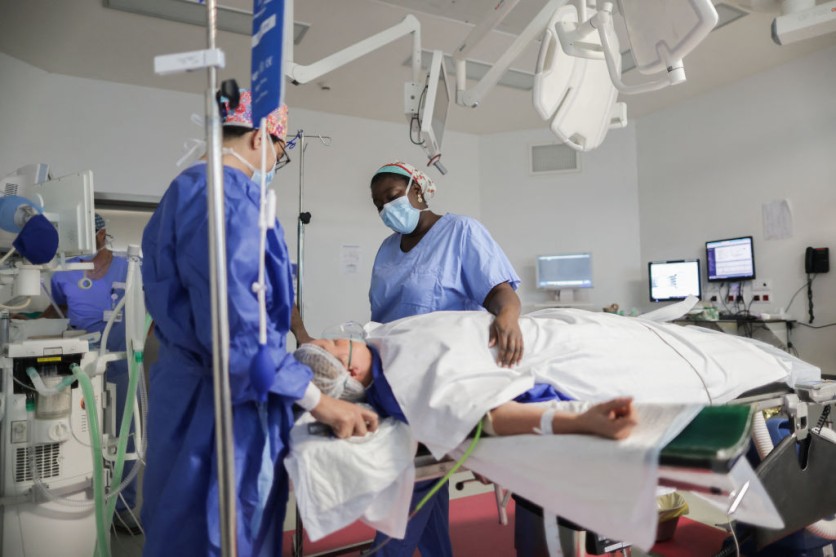Cleveland Clinic has reportedly witnessed and performed the United States' first-ever robot-assisted surgery during a dual kidney transplant.
This innovative method involved a minimally invasive robotic surgical device being used to perform a bilateral kidney transplant on Ohio resident Joanne Kukula. The procedure went well in March 2024, and Joanne made a full recovery.
Joanne's surgery was special, according to Cleveland Clinic, because the doctors implanted two kidneys from a single deceased donor using robotic surgery. This was a novel way to extend the use of marginally effective kidneys from a list of donors who would not have otherwise been eligible due to expanded criteria.

(Photo : THIBAUD MORITZ/AFP via Getty Images)
French doctor Aicha N'Doye, (R) a breast cancer surgeon who sings before her operations, sings to soothe a patient during anesthesia prior to surgery, in the operating room of the Bordeaux Nord polyclinic, in Bordeaux, south-western France, on December 11, 2023.
The demand for donors of vital organs makes double kidney transplants possible by expanding the pool of potential donors. The method also reduces the amount of time a person must wait to obtain an organ.
For Joanne's surgery, Dr. Mohamed Eltemamy employed a sophisticated multiport robot. He claimed that compared to traditional surgery, the robotic procedure is more versatile.
The doctor states that additional benefits of the robot include greater ergonomics, the capacity to operate in confined places, the ability to use enlarged 3DHD vision, and articulation at the tips of the instruments that surpass the range of motion of a human wrist.
Every year, the Kidney Transplant Program at Cleveland Clinic performs more than 300 transplants by urologic surgeons. Remarkably, about ten percent of these transplants are done with robotic assistance. As technology becomes more accessible, that number keeps rising.
According to Dr. Wee, robot-guided surgery is usually carried out through a single tiny incision. Compared to standard procedures, this minimally invasive approach usually causes less discomfort and speeds up the healing process for patients.
Robotic Surgeries in the World
While the US just saw its first-ever robot-assisted dual kidney transplant, other hospitals in the world have already utilized robotics in healthcare in a variety of medical procedures.
Most notably, King Faisal Specialist Hospital & Research Centre (KFSH&RC), one of the best hospitals in Saudi Arabia, just passed a noteworthy milestone.
After 400 robotic heart surgeries, the hospital's robotic cardiac surgery program boasts a 98% survival rate.
The Robotic Cardiac Surgery Program at KFSH&RC was initiated in February 2019 and has already completed 105 robotic procedures in its inaugural year. Since starting robotic surgeries in 2003, the hospital has grown to offer a variety of specialties, including general surgery, cardiology, urology, and transplants.
Saudi Arabian Hospital as the Best
The program has achieved international recognition; according to American Global Medical Surgical Robotics (GMSR), it has performed the greatest number of robotic heart surgeries outside of the United States and is ranked in the top five globally.
It is also recognized as the second-best program in the world for robotic replacement of the aortic valve (AVR).
The Robotic Cardiac Surgery Program at KFSH&RC stands out for its proficiency in managing intricate cases, such as surgeries on children under the age of eighteen feat that no other hospital in the world has accomplished with robotics.
Additionally, the program specializes in operating on high-risk patients, including those who need repeat procedures or have morbid obesity. Remarkably, KFSH&RC is the only hospital in the world that uses robotic surgery for patients having their third heart replacement.
Related Article : Robots Could One Day Conduct Head Transplants with BrainBridge





